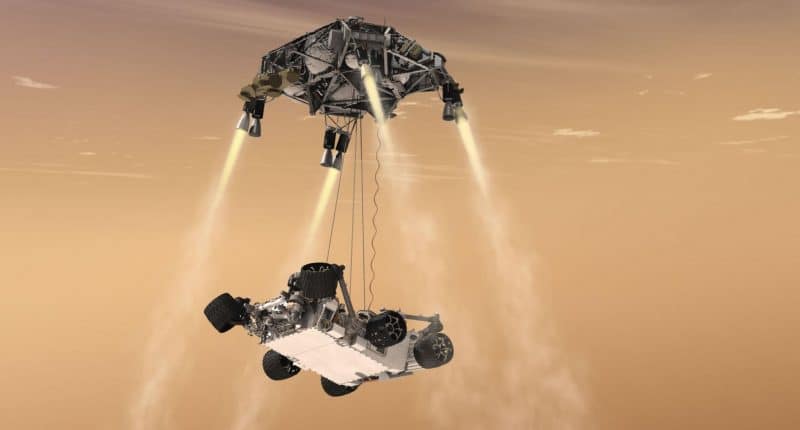NASA’s very own Mars rover Perseverance is set to complete its seven-month journey from Earth this week and land in the Jezero Crater on February 18, becoming the first artificial object to land on Mars since the Mars Insight Lander in 2018 and the first rover since 2012.
It is expected that the six-wheeled rover will take seven minutes to descend to the surface from the top of the Martian atmosphere. The final descent thus will occur during a white-knuckled interval known among engineers of the Jet Propulsion Laboratory (JPL) as “seven minutes of terror.”
It is known so because the final arc of the descent is the most critical and most dangerous part of the mission, where it may either land safely on the surface or end in a spectacular crash and explosion. “Success is never assured,” said Al Chen, who is at the helm of the JPL descent and landing team. “And that’s especially true when we’re trying to land the biggest, heaviest and most complicated rover we’ve ever built to the most dangerous site we’ve ever attempted to land at. Perseverance has to do this all on her own. We can’t help it during this period,” he added.
The final descent is self-guided, dependent on the rover’s very own Mars Entry, Descent, and Landing Instrument 2 (MEDLI2), which includes a variety of sensors (28 in total across the heat shield and back shell of the rover) – thermocouples, heat flux sensors, and pressure transducers – to measure extreme heat and pressure during entry. The MEDLI2 also contains electronics and hardware to record the thermal and pressure loads experienced during entry.
MEDLI2 will power the rover for five hours before entry, with sensor data being provided every 45 minutes to the Mars 2020 spacecraft to monitor MEDLI2’s health, as well as to provide updates of Perseverance’s surface temperatures.
MEDLI2 will continue to collect data after the peak heating and peak pressure. The pressure transducers of the MEDLI2 will also collect data during the final 1 minute 40 seconds to observe the wind speed, direction, and performance of Perseverance.
If Perseverance lands safely on the Martian surface, it will enable scientists of the future to arrive at a final conclusion as to whether life has ever existed beyond our world, while setting the stage for human missions from Earth to Mars.
A number of factors come into play on the successful landing – ranging from the inflation of a giant, supersonic parachute to the deployment of a jet-powered “sky crane” that will descend to a safe landing spot and hover above the surface while lowering the rover to the ground on a tether.
In addition to MEDLI2, cameras and a microphone, power drills, and a tiny helicopter (nicknamed Ingenuity), it also carries a number of instruments to search for signs of life, to collect samples that will be returned to Earth, and test technologies for future missions. Future missions to retrieve those samples have been planned by NASA.
After Perseverance enters the Martian atmosphere, a parachute will be deployed to slow its plunge, and the heat shield will fall away to release the “sky crane,” that will allow Perseverance to lower itself softly to the surface, slowing its descent as it nears the surface and letting it navigate itself to a smooth landing site already prepared.





